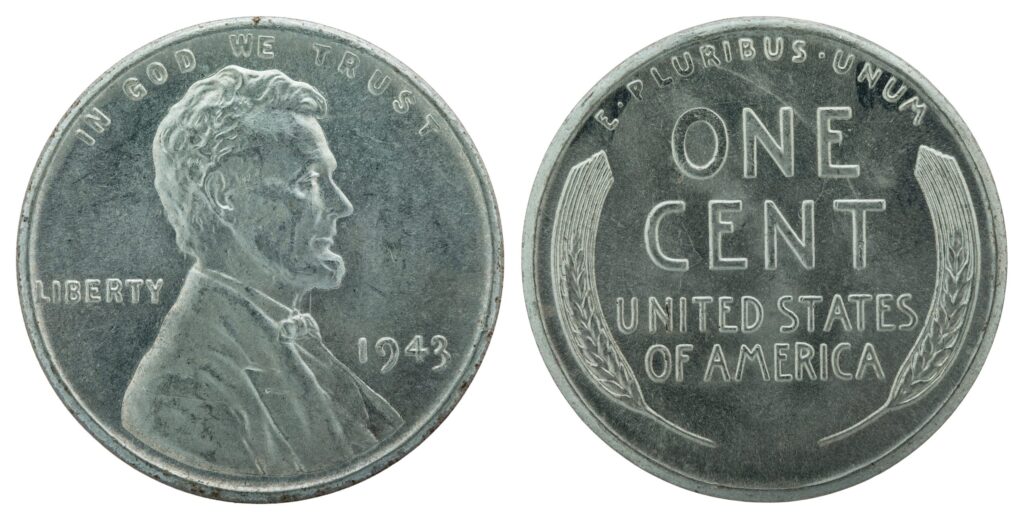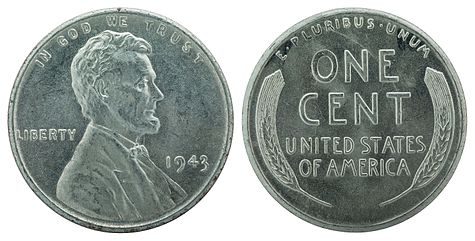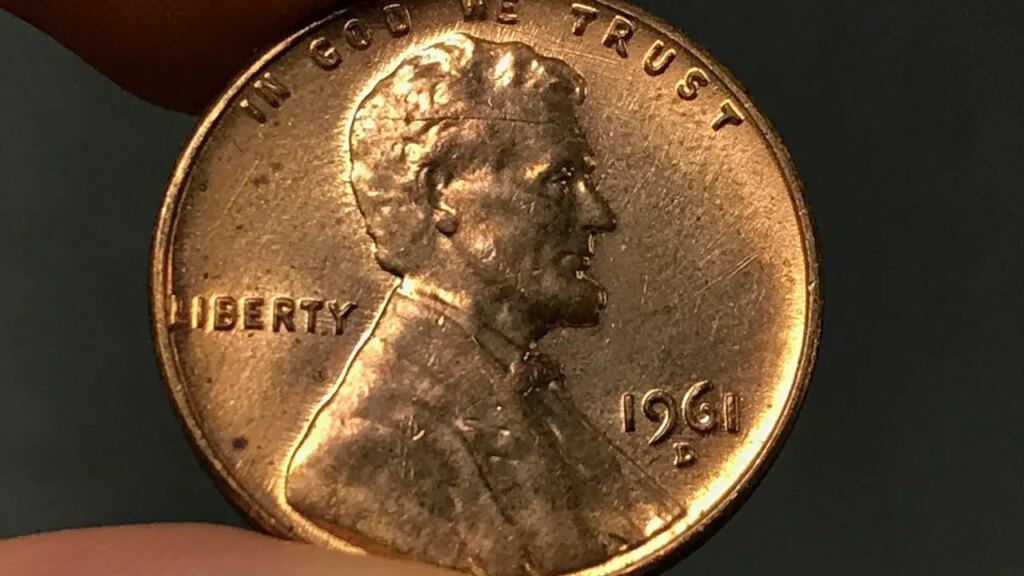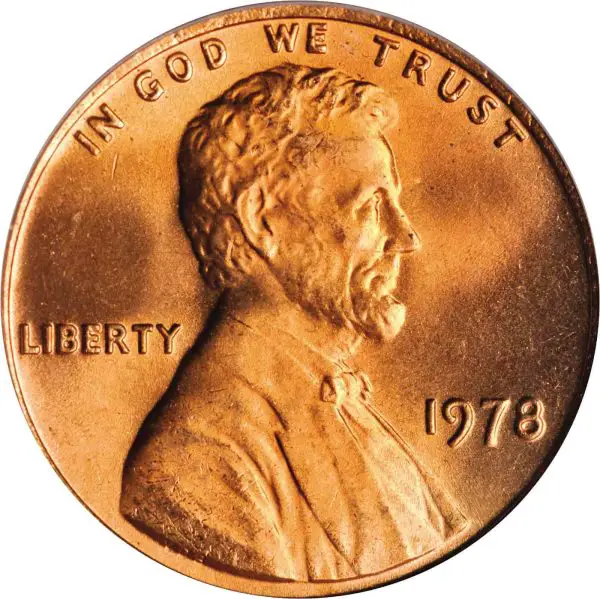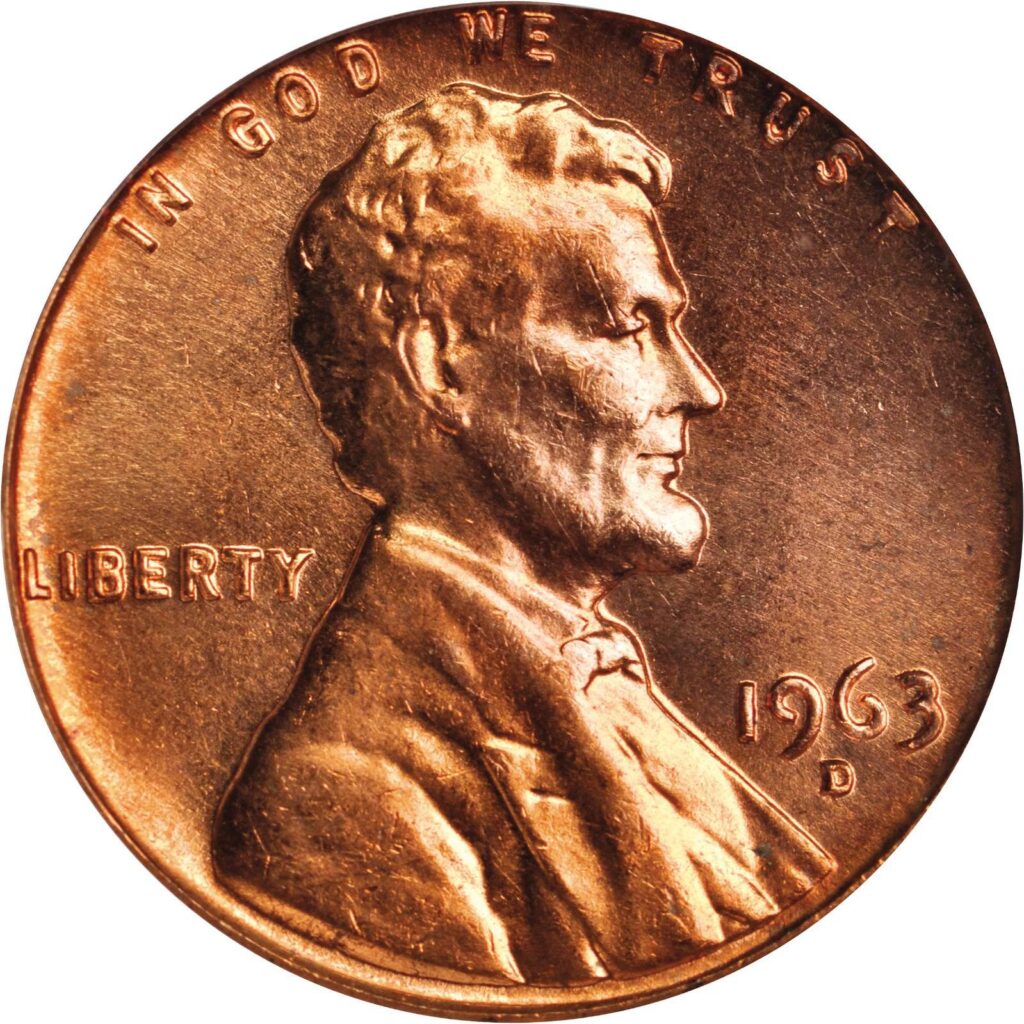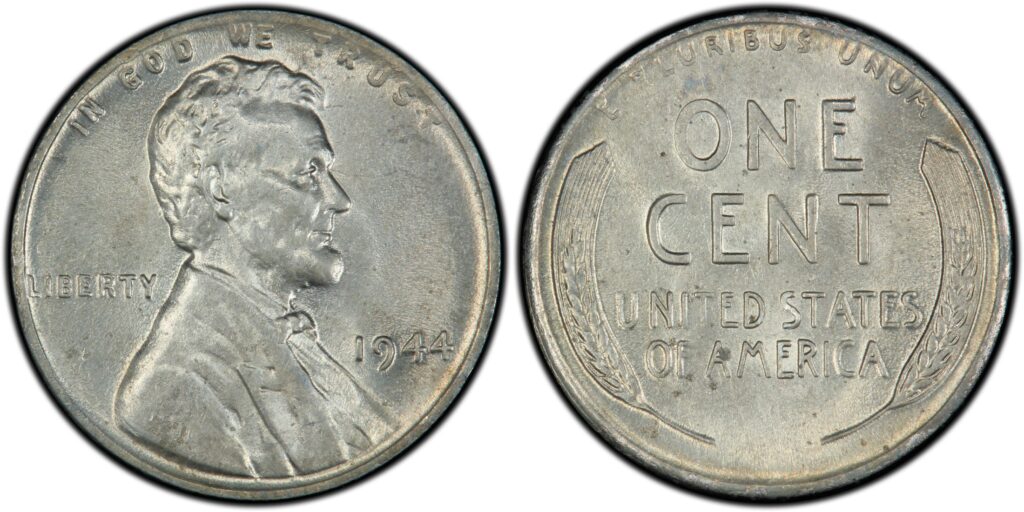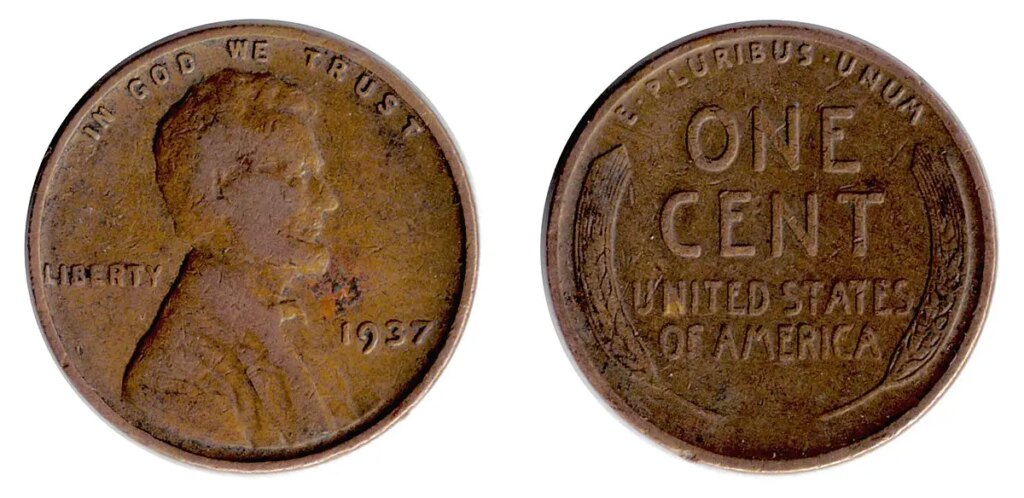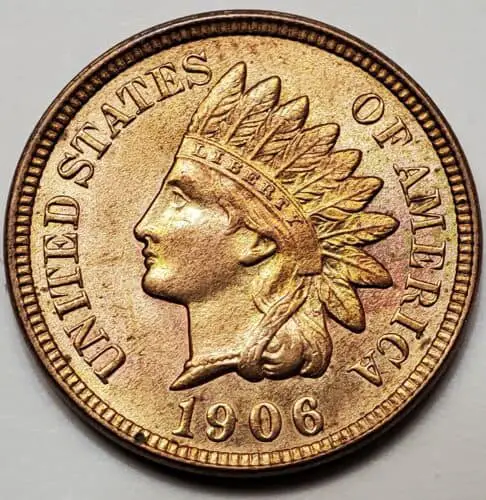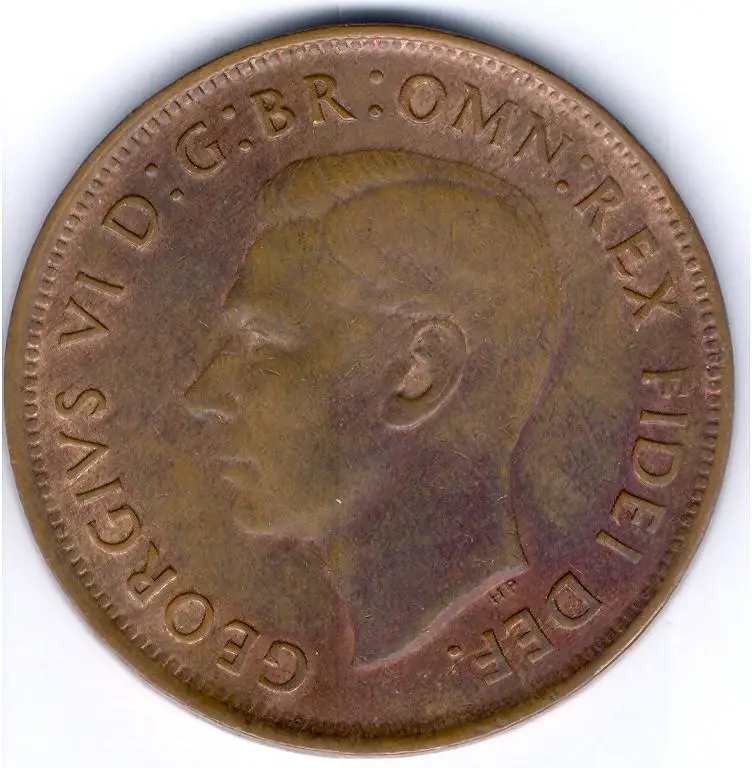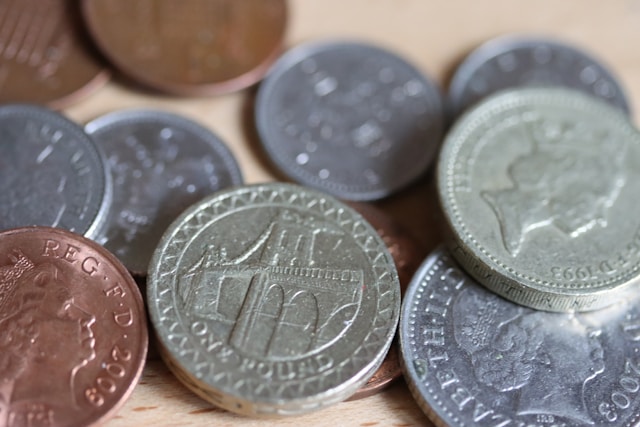If you’re a coin collector or just someone who enjoys browsing unique currency, the 1943 steel wheat penny is a must-have addition to your collection. This penny, minted as a result of the war effort during World War II, holds immense historical significance and its value has only increased over time. With its unique composition and rarity, the 1943 steel wheat penny is a highly sought-after piece for collectors looking to add an exceptional item to their collection. In this article, we’ll delve into the 1943 steel wheat penny value and what distinguishes it from other coins in the market.
The history of the 1943 steel wheat penny: A closer look
The 1943 steel Wheat penny is a highly sought-after coin among collectors due to its rarity, unique composition, and historical significance. During World War II, the United States government faced a shortage of copper, a metal necessary for creating pennies. As a result, the government issued a mandate to produce all pennies with steel cores in 1943. The coins were plated with zinc to prevent rusting and to make them look more like traditional copper pennies.
However, the production process was not without its difficulties. The steel composition caused many of the coins to quickly rust, giving them an unsightly appearance. Additionally, the zinc coating often wore off, leaving the steel core exposed. This led to some confusion among the public, who thought they had received a dime or a foreign coin instead of a penny.
Despite these challenges, the U.S. Mint produced over one billion steel pennies in 1943, making it one of the most common coins in circulation at the time. However, due to their high susceptibility to rusting, most of these pennies were eventually removed from circulation and melted down.
Today, the 1943 steel Wheat penny is a highly prized coin among collectors, with some examples selling for thousands of dollars. While the steel penny was only produced for one year, its unique composition and historical significance have made it an enduring symbol of the sacrifices made during World War II.
Tips for identifying an authentic 1943 steel wheat penny
1. Check the material: The 1943 steel wheat penny is made of steel coated with zinc, so make sure that the coin does not contain copper or bronze.
2. Use a magnet: The steel used in 1943 pennies is magnetic, so use a magnet to determine if the coin is authentic.
3. Look for date placement: The date on authentic 1943 steel pennies is located towards the bottom of the design, as opposed to being centered like the date on copper or bronze pennies.
4. Check the weight: An authentic 1943 steel penny weighs 2.70 grams, whereas a copper penny weighs 3.11 grams.
5. Look for unique features: The font used on the date, the color of the coating, and the overall condition of the coin can all help to determine its authenticity.
6. Get an expert opinion: If you are unsure about the authenticity of your 1943 steel penny, consult with a professional coin dealer or grading service.
How to grade a 1943 steel wheat penny: A beginner’s guide
Here are the general guidelines for grading a 1943 Steel Wheat Penny:
1. Look for any noticeable wear, scratches, or damage. The condition of the coin will affect its grade.
2. Check for any signs of oxidation or discoloration. Steel pennies are prone to rust and other forms of corrosion.
3. Look at the lettering and images on the coin. High-grade coins will have sharper and more distinct features.
4. Use a magnifying glass to examine the details of the coin. Small imperfections can impact the condition and grade.
5. Compare the coin to a grading chart or online resource. This will give you a better understanding of the coin’s condition and grade.
6. Use the Sheldon Grading Scale, which is a 70-point scale used to grade coins based on their overall condition. A 1943 steel wheat penny in uncirculated condition would grade between 60-70 on the scale.
7. Remember that a coin’s grade can impact its value. Higher-grade coins are typically more valuable and sought after by collectors.
Factors that determine the value of a 1943 steel wheat penny
Here’s an outline of some factors that can determine the value of a 1943 steel wheat penny:
1. Date and Mint Mark: The year and mint mark (denoted by a small letter under the date) can affect the value. Some mint marks for 1943 include “D” (Denver), “S” (San Francisco), and no mint mark (Philadelphia).
2. Condition: As with any coin, the condition of the penny can affect its value. A penny in uncirculated condition (never been used) can be worth more than one that has been circulated.
3. Rarity: Some 1943 steel pennies are rarer than others, depending on where and when they were minted. For example, the 1943 copper penny is one of the most sought-after coins in U.S. history, but only a few were ever made and they were quickly snatched up by collectors.
4. Authenticity: Because of their value, some counterfeit 1943 steel pennies exist. Authenticity is important when it comes to determining value.
5. Demand: Finally, the value of any collectible item is also driven by supply and demand. If many people are looking for a specific 1943 steel penny to add to their collection, its value may be higher.
Common misperceptions about the 1943 steel penny and their value
1. The 1943 steel penny is rare: While it is true that the 1943 penny made from steel is not as common as other coins from the era, it is not considered rare. Millions of these coins were produced, and thousands still exist today.
2. The 1943 steel penny is worth a fortune: While there are a few rare examples of the 1943 penny that have sold for significant sums of money at auction, the vast majority of these coins are worth only a few cents. The value of a 1943 steel penny largely depends on its condition, rarity, and any unique characteristics or errors that it may possess.
3. The government accidentally made steel pennies in 1943: The steel penny was a deliberate change that was made by the US Mint in response to the shortage of copper during World War II. The government needed copper for the war effort, so it switched to using zinc-coated steel to make pennies instead.
4. The 1943 steel penny is magnetic: While some people believe that the steel penny is magnetic, this is not entirely true. While the penny itself is not magnetic, the steel coating on the outside of the coin is, which is what gives it its unique look and feel.
5. All 1943 pennies are made from steel: While the majority of pennies produced in 1943 were made from steel, a few were accidentally minted using copper. These copper pennies are incredibly rare, and are worth a significant amount of money – some have sold for over a million dollars at auction.
The role of a rarity in determining the value of a 1943 steel wheat penny
The 1943 steel wheat penny is a rare coin that was produced for a short period during World War II when copper was scarce, and pennies were made from steel coated with a thin layer of zinc. However, some copper blanks remain in the press hopper, and some of the steel blanks weren’t coated. As a result, a few 1943 pennies were made of copper or steel without a zinc coating, making them extremely valuable and sought after by collectors.
The rarity of the 1943 steel wheat penny is the primary factor that determines its value. The coin’s value depends on its condition, and experts examine the coin’s surface and other features to determine its grading. Mintmarks strike quality, and other details can also affect the value of the coin.
In general, the rarer the coin, the more valuable it is, and the 1943 steel wheat penny are one of the rarest coins in circulation. This particular coin is a historical artifact that represents an important period in American history, and its rarity adds to its cultural and historical significance.
Stories of people who found valuable 1943 steel wheat pennies in their change
1. John from Ohio: John was a collector of rare coins, and during a routine trip to the grocery store, he received a handful of pennies in his change. Upon closer inspection, he noticed one of the pennies was a 1943 steel wheat penny. Excitedly, he showed it to a friend who confirmed it was authentic and worth a substantial amount of money.
2. Mary from Indiana: Mary was sorting through her late father’s coin collection and found a group of wheat pennies. As she examined each one, she noticed that one was made of steel instead of copper. She researched the coin and discovered that it was a 1943 steel wheat penny, which is quite rare. She sold the coin at an auction for a significant amount of money.
3. Tom from Texas: Tom was going through his change at a local convenience store when he came across a 1943 steel wheat penny. Instead of keeping it for himself, he decided to donate it to a local charity’s silent auction. The coin sold for several thousand dollars, and the proceeds went to a good cause.
4. Sarah from California: Sarah was a cashier at a local fast-food restaurant when a customer paid with a handful of coins. She noticed that one of the pennies was different and showed it to her manager. The manager confirmed that it was a 1943 steel wheat penny and urged Sarah to hold onto it or sell it for a good price.
In summary, finding a 1943 steel wheat penny in your change can be a rare but exciting experience. For collectors or those who need a little extra cash, these coins are highly valuable and sought after.
The differences between the 1943 steel penny and other pennies: why it was created?
The 1943 steel penny is unique because it is the only U.S. penny ever minted that is not made of copper. During World War II, the U.S. Mint was authorized to use steel to create pennies instead.
The steel penny is magnetic and has a silver appearance, which makes it easy to distinguish it from other pennies. It also tends to corrode faster than copper pennies, which gives it a distinctive patina.
The creation of the 1943 steel penny was a wartime measure to conserve copper for military purposes. It was only minted for one year and proved unpopular with the public due to its tendency to rust and wear quickly. Production of copper pennies resumed the following year.
Possible future trends in 1943 steel wheat penny value
Based on general economic patterns and factors that affect coin values, here are a few possible future trends in 1943 steel wheat penny value:
1. Rarity: The 1943 steel penny is one of the rarest U.S. coins due to its production being limited and the fact that copper was reserved for war efforts. Hence, the value of the steel penny may continue to increase as its rarity becomes more and more evident.
2. Inflation: Inflation is a consistent factor in the value of all assets. As the value of the US dollar decreases over time, the value of all coins, including the 1943 steel penny, may increase.
3. Collector’s Interest: Coin collectors have a significant influence over the value of coins. As the popularity of collecting 1943 steel pennies increases, the demand, and therefore value, may also rise.
4. Condition: The condition of a coin is a significant factor in its value. As the 1943 steel penny becomes scarcer, finding one in mint condition will become even more challenging, and its value may increase as a result.
Overall, the value of 1943 steel wheat pennies will likely increase over time, albeit with fluctuations, as their rarity and collector’s interest increase.
How to store and preserve your 1943 steel wheat penny collection: Best practices
Here are the general best practices for storing and preserving your 1943 steel wheat penny collection:
1. Keep them clean: Coins can deteriorate or corrode over time due to exposure to dirt, moisture, and oils from handling. Clean your pennies using a soft-bristled brush and mild soap and water to remove any dirt or grime. Pat dry with a soft cloth.
2. Store in a dry and cool place: Moisture and high temperatures can cause your coins to rust or corrode. Keep them in a dry and cool place, away from direct sunlight, heat, and moisture. Ideally, store your coins in airtight containers such as coin capsules or coin flips.
3. Handle coins with care: Avoid touching coins with your hands as the oils from your fingers can cause discoloration or corrosion. Handle them with gloves or use a soft-tipped numismatic tool to avoid damage.
4. Be mindful of air pollution: Exposure to air pollution such as sulfur and nitrogen oxides can cause your coins to tarnish or corrode. Store your coins in acid-free storage containers or envelopes to reduce the effects of air pollution.
5. Avoid cleaning coins excessively: Cleaning coins excessively can damage the surface and reduce their value. Don’t clean your coins unless it’s necessary and if you’re unsure how to clean them, consult a professional coin dealer or numismatist.
6. Stay organized: Keep a record of your coin collection, including the date of purchase, the price paid, and any other relevant information. This will help you keep track of your collection and its value over time.

